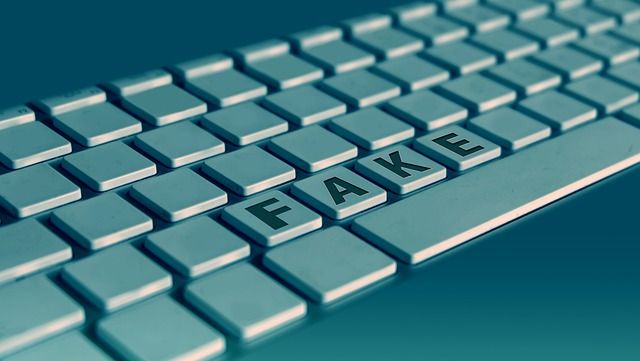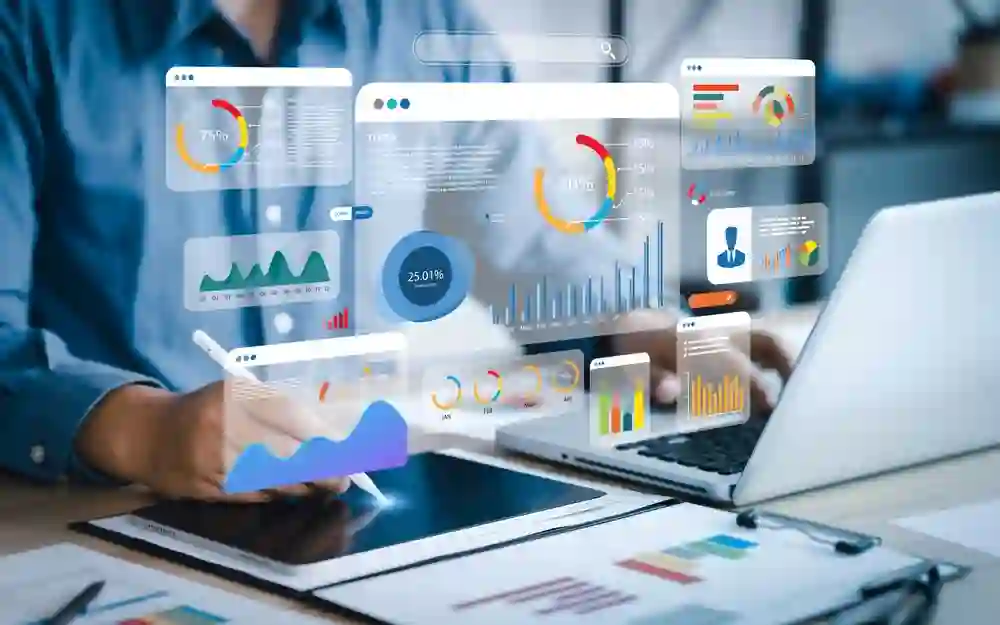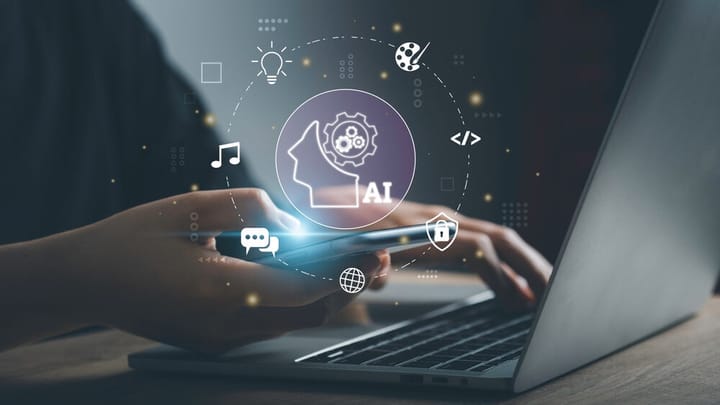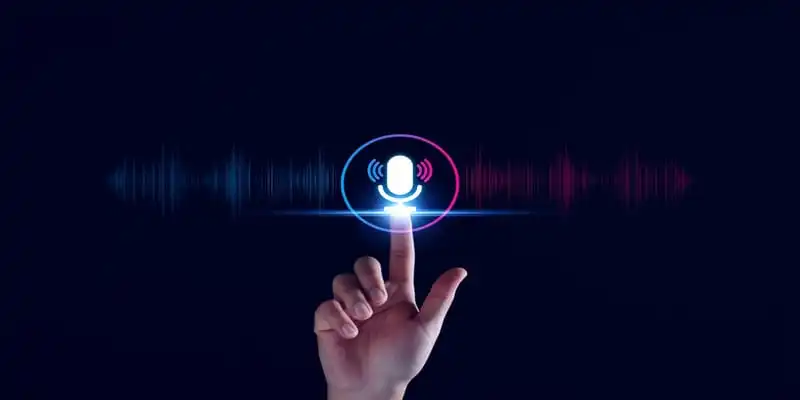AI Lie Detector: Advanced Detection Ways
The assessment of a spoken statement to detect intentional dishonesty is known as lie detection. It assesses communication content and nonverbal cues to identify dishonesty. Questioning strategies are also used with technology that captures physiological processes in order to evaluate truth and lie.

Definition And Background Of AI Lie Detector
I: What is Lie Detector?
Some people have a natural talent for lying, whereas others have a knack for detecting lies. Individuals who meet the latter description, for example, may often sense falsehoods intuitively by noticing changes in pupil dilation, blushing, and a range of micro-expressions and body movements. It is because, for the vast majority of us who haven't experienced deceivers, our bodies tend to reveal us when we lie or lie by omission.
The assessment of a verbal statement to detect international dishonesty is known as lie detection.

If you want to identify dishonesty, lie detection is a cognitive process that analyses communication content and nonverbal indications. It could also refer to interrogation techniques paired with technology that captures physiological processes to ascertain truth or untruth.
II: Early Lie Detection Techniques
According to Ford (2006), one of the first ways for proving the validity of an accused's statement was explained by the Chinese in 1000 BC. The suspect was declared guilty of fraud. This method was developed using the physiological principle that fear and worry accompanied decreased salivation and a dry mouth. Fear paralyzes us, according to contemporary authors (Matsumoto, 2009; Prako, 2011). Erasistratus sought fraud by monitoring the several nerve centuries later. In 1921, this similar approach reappeared as part of polygraph testing (Trovillo, 1939).
III: FMRI Lie Detection
Everyone knows that there are some blood vessels in the brain in which the circulation of blood takes place. The circulation of blood vessels all depends on our moods. If we are in a happy mood, blood flow is normal, and if we are in a hyper situation, blood flow increases in the brain. FMRI techniques examine the real moment of blood vessels in the brain.

Different AI Tools And Approaches To Detect A Lie
I: A CA Approach to Lie Detection
For many years, it is very easier to detect someone's lies, but on the other hand, it is very difficult to examine someone's lies because most people have the art to speak lies. So, nobody can judge whether someone is lying or not. It is decided that if we want to get rid of these issues, we have to conduct further research; as a result, cognitive techniques are invented. There are different techniques used in the mental process to examine the truth or lies of people. The results of cognitive techniques are very accurate. It correctly scans all expressions of people.
There are two ways to this cognitive lie-detecting paradigm. One mental technique creates a very difficult situation in the interview that they have to bear work harder problem in the discussion. The strategic-inquiry technique looks at several questioning methods to determine the most distinct replies from truth-tellers and liars.

II: How do Humans and Machines Detect Lies?
Someone is lying to you if they look up and to the left while speaking. How many of these deception-detection adages have you heard? Humans have always been fascinated by the idea of a lie detector, from folk psychology to polygraph exams to truth serums. As; a famous psychologist and recognized authority; on lying, Paul Ekman points out, there is no universal Pinnochio nose; that indicates that someone is lying. Individual tells; can be learned, and certain physical changes can be a good indication when considered holistically, but no ideal lie-detecting system exists yet.
However, some people are exceptionally skilled at detecting deception. You've probably come across some, the poker player who always seems to know when someone is bluffing, or your second-grade teacher. Machines have also gotten close: while not always correct, the polygraph test is reliable enough to utilize in a police investigation and many jurisdictions.
These people and machines do it by looking for changes in pupil dilation, blushing, and a range of other body language cues to identify liars in a crowd. Lie detectors, both humans and machines, use heuristics to determine whether or not someone is lying. When it comes to individuals, there is no conceptual formula that skilled liar detectors use to filter information through to determine whether or not someone is lying. The polygraph test uses more reliable quantifiable data such as heart rate and blood pressure.

III: AI is Used to Determine Whether Or Not You Are Lying
Now the question arises of how artificial intelligence detects lies. How it studies the human beings' behavior, mentally thinking, physical gestures, eyes lift, body shivering, condition of anger, state of happiness, condition of fear, state of weeping, posture. Voice and many other positive and negative gestures.
The answer is very simple, concise, and accurate. It is designed in a very precise and smart way to judge all these expressions efficiently and give the correct report. It has developed after great research work.
Elkins recently told CNBC that the system had an accuracy rate of 60 to 75 percent, with peaks as high as 80 percent. While those figures may not appear to be impressive, they nevertheless outperform humans, who, according to him, only rate sincerity correctly between 54 and 60%.
There is much technology available in the market rather than an avatar. Converus, based in Lehi, announced a new technique in the last month that they introduced a system in which 30 minutes test of sincerity was conducted with the help of eye fluctuations. Many countries accept this technique. This report is then submitted to the court as a legal document for further proceedings. It provides great help in legal proceedings.

IV: Micro Facial Expressions; Read by an AI-Powered Lie Detector Tool
Tel Aviv University scientists have developed a new AI-powered lie detector system that scans human micro facial expressions to judge the truthfulness of assertions. During the development; of this novel artificial intelligence; enabled lie detector, Professor Yael Hanein and Dino Levy led the research team. Researchers tracked and analyzed micro-expressions of humans that vanish in 40 to 60 milliseconds in several experiments. Although the technology is not yet perfect, the researchers claim it is the most accurate facial recognition lie detection tool yet produced, with over 73 percent accuracy. Researchers asked 48 people to pull their brows or cheek muscles during the lie detector device. The device generates; results by motoring muscle movements near the brows and cheekbones with electrodes. Individuals who were adept in deceiving their human counterparts were likewise detected badly; by the machine learning algorithm. Experts say the newly developed artificial intelligence-powered lie detection tool is incredibly promising and has the potential to play a key role; in a variety of businesses, sectors, and security areas. On the other hand, Longer lies contain deception and truth," Levy noted.
The facial muscles were examined using stickers printed on soft surfaces with electrodes that monitored nerves. Stickers are placed on the cheek muscles near the lips and the muscles above the brows for the study. After that, the volunteers were asked to sit in pairs, put on headphones, and face each other before hearing "line" or "tree" spoken into their ears. After putting headphones into the ears, then a series of questions arise. He asked what he had heard through the headphones.
It was the partner's job to figure out; that the other person was telling the truth. The findings revealed; that the partner couldn't distinguish whether the other person was lying or stating the fact. The electrical signals picked up by the stickers on the face, on the other hand, detected a lie 73% of the time.
V: How can an AI lie detector identify whether you're lying?
Artificial intelligence lie detector easily detects signs of depression in a man's voice. The effort is divided into two parts, the first of which is a lie-detection component; that takes place at home. Pre-screening is the first step in the routine in which travelers "use a webcam to answer questions from a computer-animated border guard, tailored to the traveler's gender, race, and language," according to European Commission.
Data is the starting point for artificial intelligence and machine learning researchers. They begin with films of actual court procedures in Mihaleca'S work. For example, during a trial in which they were found guilty, a dependent could provide an example of deception; they could also use witness testimony as an example of real or deceptive comments.
When someone is guilty, he provides different documents, witnesses, and other things to prove right. On the other hand, the same party did the same procedures to prove that we were right.
Every day, long proceedings were held. Sometimes, these proceedings are never ended till one year. The only way to solve this problem is to use an AI lie detector. They detect data very few times and tell how it is wrong and right.
Artificial Intelligence Tools for Lie Detection
1:Learn Scikit
Scikit learn is the most used ML library to enable unsupervised and administered calculations. There are many measures in data mining and normal AI assignments. Only a few lines of code are required to perform feature determination, information alternation, and ensemble techniques. Scikit learn is the right tool for you if you wish to utilize a tool for learning.
2. Tensor Flow
Calculations can be beneficial, and you should apply them whenever possible, but are they always required. To be sure, this isn't always the case. But, if done correctly, are these calculations worthwhile? The answer is a resounding Yes. With TensorFlow, you can write a python program that can be run and organized on the GPU or CPU. As a result, you don't need to build the program in CDA oR C if you want it to work on GPUs.
3. Theano
Under the Theano, the Keras is folded. Keras is a sophisticated python deep learning library that works with TensorFlow or Theano. Theano was intended to make creating complicated learning models easier and faster, utilizing them in creative projects. It's written in python and can run on GPUs and CPUs. Theano may make use of the graphics processing units on the computer.
4. Caffe
Caffe is a structure that encourages deep learning and places a premium on speed, articulation, and quality. The Berkeley vision and learning center created it. It comprises a python interface for a C library.
AI Lie Detector for Security At Airport
The Avatar, whose "face" displays on a screen, asks travelers a series of pre-programmed questions and determines whether or not they are telling the truth. It analyses information such as a person's facial expressions, tone of voice, and verbal replies, looking for deception signals such as involuntary micro-expressions; that could be caused; by the cognitive stress of attempting to deceive. The Avatar then decides if an interviewee is telling the truth or not, categorizing them as green, yellow, or red.
According to the business, the Avatar is invented and might be accessible in six months due to government-funded university research. The use of avatars in the business field has changed the dimensions of business activity.
AI Kiosk's Lie Detector is the Future of Border Airport Security
It is true that with time, the latest invented technology has completely changed man's life, and It has some side effects; but makes the life of human beings easier. Artificial intelligence lie detector is one of the biggest achievements in the technology industry. Many different categories are invented to detect lies like AVATAR and many other techniques in artificial intelligence. The AI kiosk's lie detector catches people's lies in the airport. In just a few seconds, the airport team gets results of passengers whether they are liars or not. Many countries do these practices to detect lies with the help of Artificial Intelligence Kiosks lie detector.
According to Aaron Elkins, one of the system inventors and the head of San Diego state university's artificial intelligence lab, funding for the initial effort came mostly from the Defense or Homeland security departments a decade ago. While AVATAR is not currently a commercial product, he explained that it is used for human resource screening.
We above argue that AVATAR is one technique in the AI lie detector. But it is not allowed to use for commercial purposes. Many other AI lie detector is available for daily use. But AVATAR is considered one of the best lie detectors in the modern era. It is mostly used in the airport and offices.
The advanced kiosk is tested at the US-Mexico border. After 2011-12 trials, the system's research team released a study claiming; that the AVATAR technology is used to process citizenship, asylum, and refugee applications and minimize backlogs.
AI Is Better Than Humans at Detecting Online Lies, And It Could Be Your Perfect Tinder Filter
Some people are exceptionally skilled at interpreting body language. Even for them, pinpointing the same in an online chat with no voice or facial expressions becomes extremely difficult. But don't worry, there's an app to examine online lies.
Researchers at Florida State University aimed to help people break down the barriers that prevent them from understanding the true motivations of others in online chats. You can; administer a polygraph test while doing so in a police inquiry. So the researchers decided to create a polygraph test except for online interactions.
You can use it for online dating, Facebook, Twitter—the possibilities are unlimited, Shuyuan He, an associate professor in the College of Communication and Information, said.
"I believe an online polygraph system's potential is limitless."
The researchers then utilized machine learning to analyze all of the data they had gathered, focusing on the language and discussions they used.
They discovered that, like micro-expressions and stutters, digital discussions are replete with telltale signs that someone is lying. People who lied in the text were less expressive, although they utilized more ornamental terms. They were also more prone to show negative emotions and appear anxious when conversing with people telling the truth.
The "saints,"; on the other hand, were more speculative and took longer to react to inquiries, most likely because they were considering their responses. They were also more introspective and more inclined to cite reasons and motivations for their statements.
It comes out that a human can detect lying in internet messages 50% of the time. On the other hand, Ho's machine learning system can do it 85 to 100% of the time. Consider how much better our lives are if AI is integrated into the apps we use in the future. For one thing, dating apps like Tinder would become safer for women, and you'd be less likely to end up on a bad date. It might also be; useful for social media and who knows what else.
Conclusion
Despite concerns about the technology's capacity to identify fraud properly, testing reveals that AI lie detectors outperform human interrogators. Discern International Science claims; that its method has a 70 percent to 92 percent accuracy rate. On the other hand, humans can detect fraud in about 54% of cases. Humans, too, are prone to bias, whereas robots, unless specifically programmed, are not. "I expect AVATAR will do far better than the average human interrogator with sufficient training. It will be more observant, as machines are, less weary or distracted, and less biased," Baikalov added. It's improbable that an AI trained on micro-expressions would give an attractive young woman preferential treatment over a scruffy-bearded middle-aged male.


